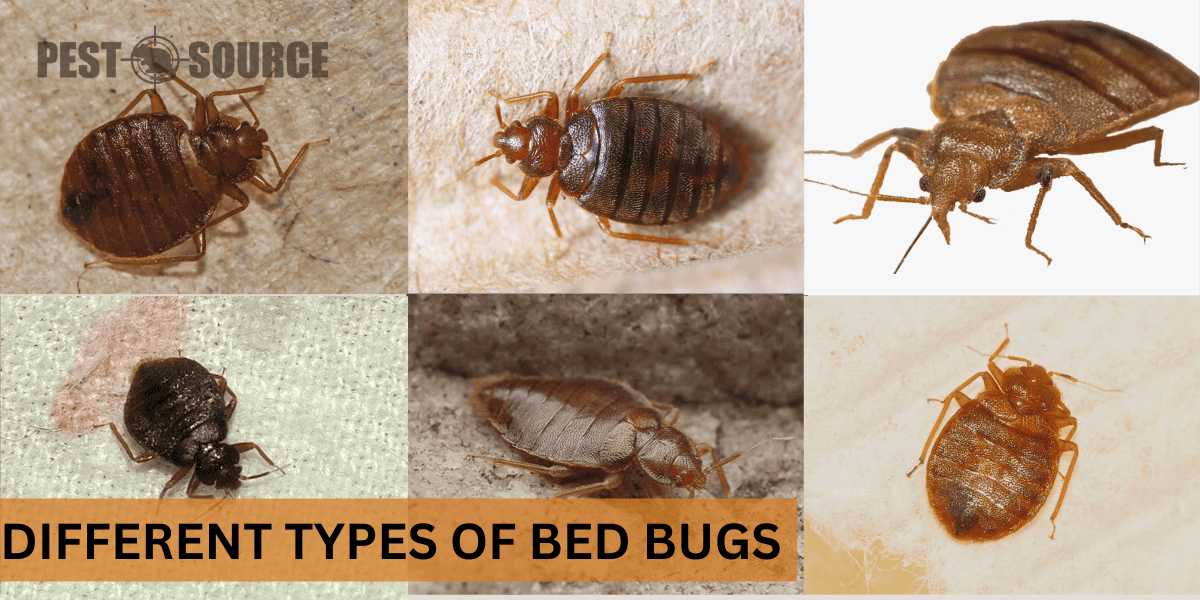There are primarily two types of bed bugs that infest human habitats: Cimex lectularius and Cimex hemipterus. While similar in behavior and appearance, they can be found in different regions and environments. This article will break down the characteristics and habitats of each type, helping you identify and tackle the specific bed bug infestation you might be facing.
POINTS
- There are various types of bed bugs worldwide, such as the common bed bug (‘Cimex lectularius’), the tropical bed bug (‘Cimex hemipterus’), the West African bed bug (‘Leptocimex boueti’), the Mexican chicken bug (‘Haematosiphon inodorus’), the swallow bug (‘Oeciacus vicarius’), and several species of bat bugs.
- Differentiating between various types of bed bugs based solely on appearance can be challenging without specialized knowledge or equipment due to minute physical differences. However, the type of host they prefer or the geographical region they inhabit could provide clues.
- Common signs of an infestation include bites on your skin, often in a line or clustered together, spotting tiny black fecal spots on your bed sheets, shed skins of bed bugs, or seeing the insects themselves. These signs remain largely consistent across different species.
- Control and management of bed bugs involves identifying the species, deep cleaning, heated treatment, or professional pesticide application. Knowledge about different species of bed bugs can aid in applying a more effective pest control strategy.
- A misconception is that all bed bugs are harmful to humans; in reality, while some types of bed bugs exclusively feed on humans, others primarily infest birds or bats. However, in the absence of their primary host, these bugs could resort to feeding on humans.
The Most Common Types of Bed Bugs
How Many Types of Bed Bugs Are There Globally?
Globally, there exist over 90 species of bugs identified under the family Cimicidae, but fortunately, only a handful of these are considered a real nuisance to humans. When you think of bed bugs, you’re most likely thinking of ‘Cimex lectularius,’ the most prevalent species attacking our homes. However, there are several other types of bed bugs that may not be as well-known.
What Are the Most Common Types of Bed Bugs?
The most common types of bed bugs that might pose a threat to your peaceful sleep include:
- Cimex lectularius: The common house bed bug
- Cimex hemipterus: The tropical bed bug
- Leptocimex boueti: The West African bed bug
These are the key players in the hide-and-seek game that bed bugs love to play with humans. As you go further into this article, you will learn more about the different types, their physical characteristics, feeding preference, and geographical distribution.
Understanding the Different Types of Bed Bugs
What Is the Cimex lectularius, or the Common Bed Bug?
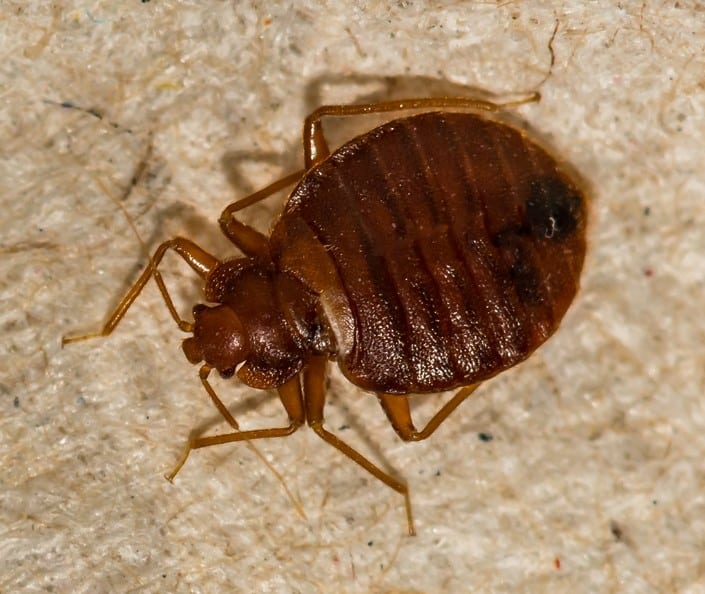
“common bed bug” or “household bed bug“
The ‘Cimex lectularius,’ also known as the common bed bug, is the type that keeps pest control businesses thriving. This star player in the bed bug family has a worldwide presence, although it’s a bigger fan of temperate climates over tropical regions. The common bed bug is renowned for its adaptability and seems to have a knack for surviving various climates and environments, which is bad news for us.
The common bed bug is nocturnal and feeds on the blood of unsuspecting humans and warm-blooded mammals. Their bites can cause skin rashes, allergic symptoms, and even psychological effects. Therefore, it’s crucial to keep a close eye out for these unfriendly visitors.
What Is the Cimex hemipterus, or the Tropical Bed Bug?
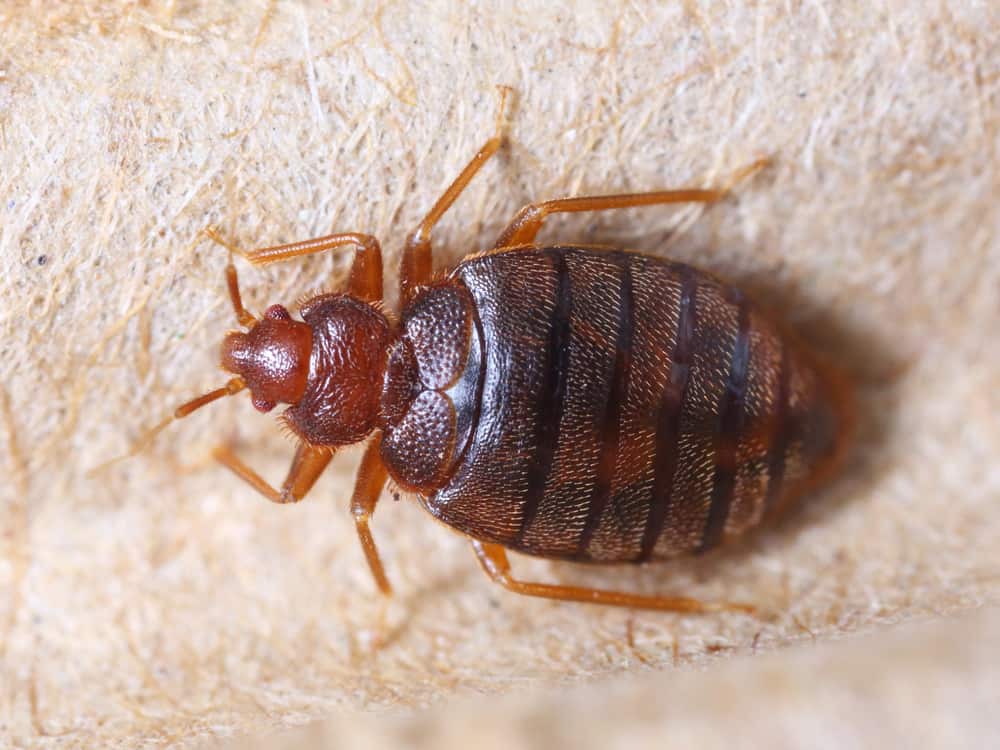
Meet the tropical cousin of the infamous common bed bug, the ‘Cimex hemipterus,’ also known as the tropical bed bug. As the name hints, this species thrives in tropical and subtropical regions. Its distinctive feature is its larger built compared to the common bed bug and a wider prothorax.
Much like its relative, the tropical bed bug also loves indulging in a good feast on human blood, especially when we’re deeply off in dreamland. Consistent with other bed bugs, its bites can lead to a range of skin irritations and allergies.
What Is the Leptocimex boueti, or the West African Bed Bug?
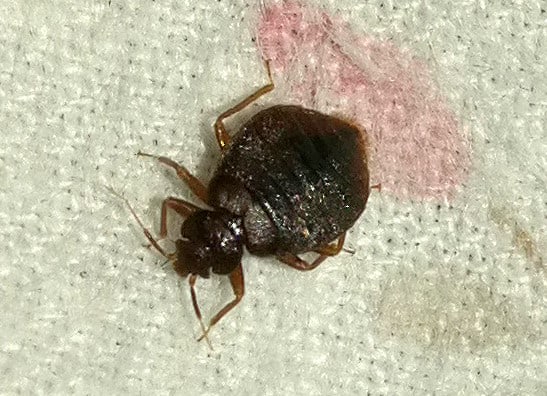
The ‘Leptocimex boueti,’ commonly known as the west African bed bug, is another member of this notorious family. As you’ve probably guessed from the name, this type of bed bug is native to West Africa and South America. This bug, though smaller than the common bed bug, has a more elongated body.
Although the West African bed bug feeds on human blood much like its notorious bed bug cousins, it’s not commonly present in human homes. These bugs are often found infesting common roosting places for birds like pigeons, which are their primary food source.
What Is the Haematosiphon inodorus, or the Mexican Chicken Bug?
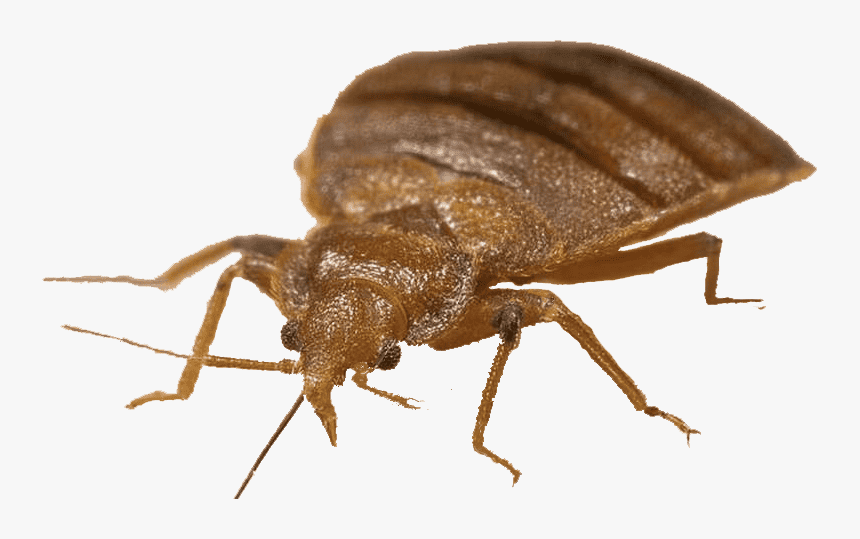
The ‘Haematosiphon inodorus,’ known as the Mexican chicken bug, is a bed bug variant you’ll typically find infesting birds, particularly chickens. Primarily found in North America, these bugs are larger than common bed bugs and can transfer several types of poultry diseases, leading to significant monetary loss in the chicken industry.
While their preference is birds, a lack of meals can drive them to bite humans. However, compared to their notorious cousins, Mexican chicken bugs are not typically a major concern for household infestations.
What Is the Oeciacus vicarius, or the Swallow Bug?
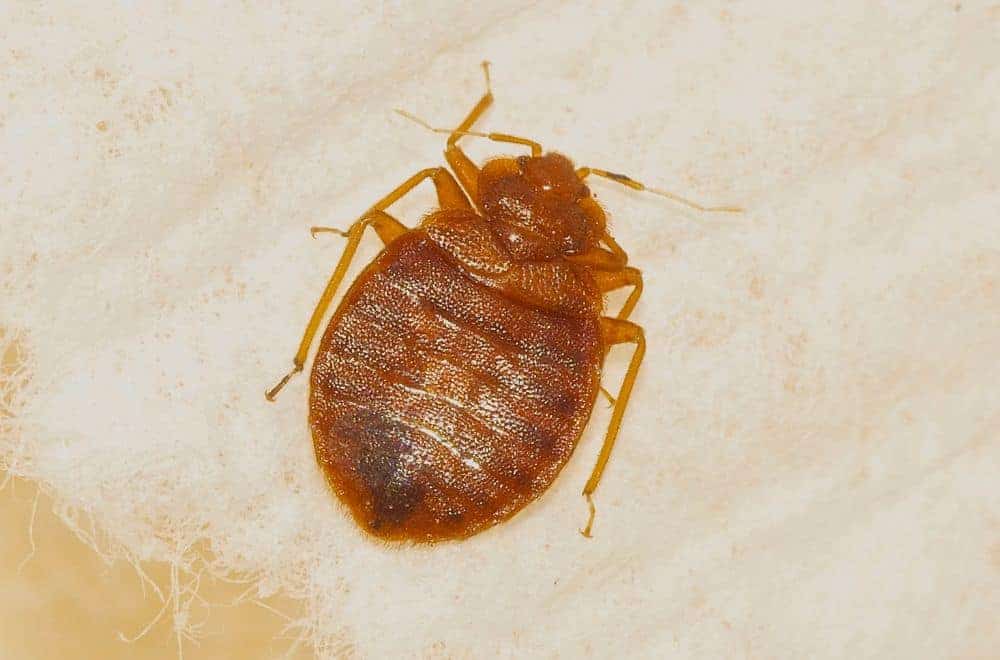
The ‘Oeciacus vicarius,’ colloquially known as the swallow bug, is a unique member of the bed bug family. Although this insect comes from the same family as the infamous bed bug, it primarily targets not humans, but birds – specifically swallows.
Swallow bugs are named after their preferred hosts – swallows. Especially prevalent in swallow nests, these bugs will wait until the birds return to their nests and then emerge to feed on their blood. When their bird hosts migrate and leave the nests temporarily empty, swallow bugs can survive without a meal for quite an extended period, lying dormant until the birds return.
Swallow bugs share a strong resemblance with common bed bugs, having a similarly small, flat, oval-shaped body. But, unlike their notorious relatives, these bugs typically aren’t a high concern for humans. However, in absence of their usual hosts, they may bite humans if they come into contact.
What Are Bat Bugs?
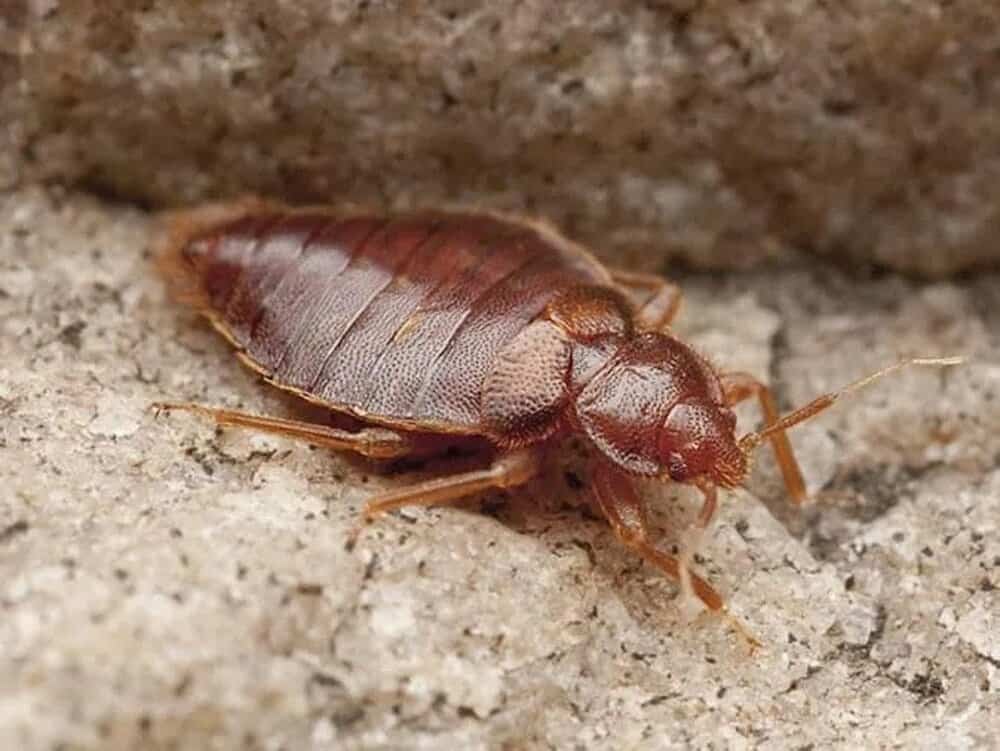
Rounding out our list, we have the ‘Bat Bugs’, which is a collective term used for bed bugs that primarily infest bats, and their most common types are ‘Cimex pilosellus’ and ‘Cimex pipistrelli.’ Just like every other member in the bed bug family, bat bugs are parasites that feed on the blood of warm-blooded animals – in this case, bats.
Bat bugs share a striking physical resemblance with the common bed bug, often leading to misidentification. They are typically about the same size as common bed bugs and have the same flat, oval shape. However, bat bugs can be differentiated by their longer fringe hairs on the upper covering of their thorax.
These bugs are generally found in places where bats roost, such as attics and belfries, clinging onto the bat’s body and feeding on their blood. While bat bugs primarily prefer bats, if their host becomes unavailable – say during winter hibernation – they can and will resort to feeding on other warm-blooded hosts, including humans.
Now that we’ve met the ‘pest-y six,’ let’s delve into some their physical characteristics that help in differentiating them.
The Physical Characteristics of Different Bed Bugs
How Do the Sizes of Different Types of Bed Bugs Vary?
As you may have deduced, there’s a range of sizes when it comes to bed bugs. The common bed bugs are relatively small, measuring just about 0.2 inches in length. On the other hand, the tropical bed bugs are slightly larger in stature, boasting a wider prothorax.
How Are Different Bed Bugs Similar and Different in Physical Appearance?
Regardless of the type, most bed bugs share similar physical traits – they are tiny, oval insects with flat bodies. However, the West African bed bugs stand out from the crowd a bit with their more elongated bodies compared to their counterparts.
How Can You Differentiate Between the Different Types of Bed Bugs?
Unless you’re an entomologist equipped with a microscope, it may be difficult to distinguish between the different types of bed bugs based solely on appearance. This is because the differences in their physical qualities are pretty minute and subtle. However, their geographical presence and the environment they inhabit might provide a clue about their identity. For instance, if you’re in a tropical region and find a larger specimen, it could very well be a tropical bed bug.
Bed Bug Identification
What Do Different Types of Bed Bugs Look Like?
Different types of bed bugs do have subtle physical differences, but for a layman, it’s hard to tell them apart based solely on their looks. Broadly, they have small, flat bodies shaped like an oval, and when they haven’t fed, appear more or less reddish-brown. The younger bed bugs, known as nymphs, or baby bed bugs, are almost colorless, rendering them more difficult to identify. Explore further to understand in detail what bed bugs look like.
Can the Different Types of Bed Bugs Be Distinguished Without a Microscope?
To effectively distinguish between different bed bug types, a microscope is required due to the minute physical differences. However, their location or the animal host they are found on can guide you to their possible species, for example, the Mexican chicken bug found on birds.
Habitat and Feeding Patterns
What Types of Hosts Do Different Bed Bugs Prefer?
While ‘Cimex lectularius’ and ‘Cimex hemipterus’ are infamous for terrorizing human hosts, other types of bed bugs like the Mexican chicken bug and the Swallow bug have different preferences, feasting mostly on birds.
Are There Bed Bugs That Are Specific to Certain Geographical Regions?
Absolutely! Geographical regions play a significant role in the occurrence of specific bed bugs. For instance, ‘Cimex hemipterus’ more commonly infests regions with tropical and subtropical climates.
What Are the Distinctions Between Household Bugs and Other Types of Bed Bugs?
Primarily, Household bugs such as the common bed bugs thrive in close proximity to human residences since humans are their preferential hosts. While certain other types of bed bugs, like the Mexican chicken bug, are more likely to infest birds and poultry houses. These distinctions in habitat preferences are a key factor in controlling and preventing infestations.
Bed Bug Species Beyond the Commonly Known
What Are Some Lesser-Known Types of Bed Bugs?
Apart from the commonly known species, there are other species like the ‘Cimex pilosellus’ and ‘Cimex pipistrelli’ which primarily affect bats and occasionally human dwellings. More studies are needed to gain a better understanding of these species and their behavior.
Are There Different Species of Bed Bugs?
Yes, there are many species of bed bugs. However, most of these species prefer an animal host and are not commonly found in human dwellings. Only a handful, like our ‘Cimex lectularius’ and ‘Cimex hemipterus,’ regularly infest human habitats.
What Is the Cimicidae Family, and How Is It Related to Bed Bugs?
The Cimicidae family is a group of insects which includes all the bed bugs we’ve discussed so far. This family is characterized by small wingless insects that feed on the blood of warm-blooded hosts. If you find a bed bug, know that it falls under the Cimicidae family, regardless of the species.
Encounters with Bed Bugs in Domestic Spaces
Are There Different Types of Bugs Found in Beds?
While ‘bed bugs’ might imply a single type of bug, in reality, the kind of bugs found in beds can vary. In addition to common bed bugs, there may also be ticks, fleas, or other types of mites sharing your bed.
What Other Types of Bugs Can Be Mistaken for Bed Bugs in Houses?
Bugs such as carpet beetles, booklice, or bat bugs can often be mistaken for bed bugs due to their similar appearance.
Can Bed Bugs Be Confused with Bed Mites or Beetles?
Absolutely, bed bugs often can be confused with other tiny pests like bed mites, carpet beetles, or even bat bugs due to their similar size and coloring.
What Are the Types of Bed Bug Mites and How Are They Related to Bed Bugs?
Bed mites or dust mites are tiny creatures that commonly live in house dust. While bed bugs feed on blood, dust mites prefer flakes of human skin. These mites, although sharing a common habitat – your bed, are not related to bed bugs.
The Universal Signs of Bed Bug Infestations
What Are the Common Signs of a Bed Bug Infestation, Regardless of the Species?
Common signs of a bed bug infestation include bites on your skin, often in a line or clustered together. Other signs include spotting tiny, black fecal spots on your bed sheets, skins shed by growing bed bugs, or indeed, witnessing the live bugs themselves.
Are There Different Kinds of Signs for Different Bed Bug Species?
The signs of an infestation are mostly generic across bed bug species. Because of the similarities in their feeding habits and life cycle, the signs like bites, blood spots, fecal spots, and shed skins remain largely consistent.
How Can Different Types of Bugs in the Bed Be Identified and Managed?
Identification of the bugs inhabiting your bed could require professional help, considering many bugs bear a close resemblance to each other. Managing an infestation involves deep cleaning, heated treatment, or professional pesticide application.
What Is the Impact of Different Types of Bed Bug Infestations on Humans?
While the exact impact can vary depending on species, size of the infestation, and an individual’s reaction to bites, common issues include itching and allergic reactions. Heavy infestations could also lead to sleep deprivation or anxiety stemming from knowing these pests share your bed.
Common Misconceptions About Bed Bugs
Are There Different Kinds of Bed Bugs or Is There Only One Type?
Contrary to popular belief, “bed bug” is not just one type of bug; rather, it encompasses several species belonging to the Cimicidae family.
Are All Bed Bugs Harmful to Humans or Are There Types That Are Benign?
While some types of bed bugs exclusively feed on humans, others prefer birds or bats. So not all species are harmful to us, but when their primary host is unavailable, they could find humans to be a feasible alternative.
What Are Some Inaccuracies Associated With the Size of Bed Bugs (Like the Perception of a ‘Big Bed Bug’)?
One big myth to bust is that bed bugs, including common ones, do not grow into the size of an apple seed. While they might swell up and darken after a blood meal, typically, they are much smaller. After all, their flat and tiny bodies are what allow them to be such stealthy pests.

